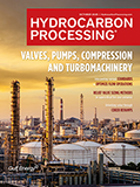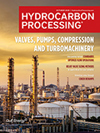Large-scale advanced pyrolysis technology development: A proven route to chemical recycling and steam cracker integration
This article highlights the key advancements in developing the author’s company’s advanced pyrolysis technology, focusing on improvements in scale-up, heating efficiency, process optimization and product recovery.
IP: 10.2.76.72
This is a preview of our premium content. Thank you for your interest—please
log in or
subscribe to read the full article.
The Author
Chakraborty, S. - Lummus Technology, Houston, Texas
Sudipto Chakraborty is the Technology Manager, Advanced Plastic Pyrolysis Technology for Lummus Technology’s Green Circle business. Chakraborty leads technology development at Green Circle, a Lummus Technology business, directing R&D and engineering teams to develop and commercialize circular economy initiatives, with a focus on converting waste plastic mix to fresh plastic raw material using chemical recycling routes. He has more than 20 yr of experience in the refining industry, specifically with hydroprocessing units and HPC catalyst design. Chakraborty earned a B.E degree in chemical engineering with gold medalist honors from Jadavpur University, India.
Related Articles
From the Archive







Comments